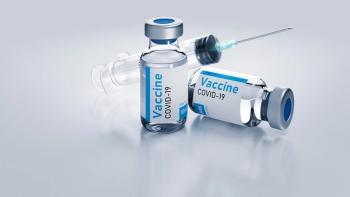
- BioPharm International-05-01-2008
- Volume 21
- Issue 5
Coming to Biotech Near You: Quality by Design Part 1: Its Applicability in Biopharmaceuticals
The principles of QbD can be applied to biotech development and manufacturing to help resolve many common issues. QbD scientifically provides a greater understanding of the complex relationships among product quality attributes, the manufacturing process, and clinical safety and efficacy by determining the various permutations of critical input variables that will keep the product within specification.
Biopharmaceutical scientists can be forgiven for thinking that they are already practicing the science-based approach to drug development promised by Quality by Design (QbD).
Conrad J. Heilman, Jr., PhD
For more than 30 years, they have worked methodically to develop the science and technology required to design and genetically engineer systems and develop processes required to commercialize protein-based products—some of which are complex, large molecules with numerous polypeptide chains, conformational requirements, post-translational modifications, and other attributes. Despite the fact that such products are derived from living bacterial or mammalian cell culture systems that require careful handling and control, the industry has learned how to develop and manufacture many safe and effective products to address a great number of previously unmet medical needs.
Watching these scientists work, one develops an appreciation for their knowledge of these complex systems and skills required to control them. On the basis of their intimate familiarity with every facet of these processes, many scientists, like artists, can tell from visual inspection (e.g., of a cell culture) what is needed to complete the picture—a little more oxygen, a particular nutrient, or some other intervention—to "make the cells happy." Some manufacturers apply elements of QbD, as well as Process Analytical Technology (PAT). A lifecycle approach to validation, for example, closely resembles aspects of QbD. Some manufacturers have also carried out risk assessments in assuring quality. And some companies are using multivariate analysis to solve problems encountered in biotech processing.1 Little wonder, then, that some industry scientists regard QbD as redundant.
Far from being redundant, however, QbD is the next stage of scientific sophistication for an already very scientifically sophisticated industry in its quest to produce safer, more efficacious biopharmaceuticals and to produce them more rapidly, cost-effectively, and in a regulatory-compliant manner. In an often-quoted statement from 2004, FDA's Janet Woodcock said that QbD "means that product and process performance characteristics are scientifically designed to meet specific objectives, not merely empirically derived from performance of test batches." Further, she said, "good pharmaceutical quality represents an acceptably low risk of failing to achieve the desired clinical attributes." QbD then is two-pronged: (1) increased scientific understanding of products and processes and (2) risk-based compliance made possible by that understanding.
Many current methods, scientific though they may be, do not meet those criteria. Table 1, developed by the International Committee on Harmonization (ICH), supplies some contrasts between traditional approaches to drug development, manufacturing, and control and approaches that leverage QbD. With QbD, quality is designed into the process and product instead of being "inspected" in after the fact. QbD scientifically provides a greater understanding of the complex relationships among product quality attributes, the manufacturing process, and clinical safety and efficacy by determining the various permutations of critical input variables that will keep the product within specification. With comprehensive knowledge of the multiple, complex interactions among variables, it is then possible to predict the outcome from particular permutations, thus opening the way for a risk-based approach to compliance. Process understanding increases dramatically and leads the way to regulatory flexibility and continuous validation as more and more experience is gained over time.
Table 1. Minimal approach contrasted with the QbD approach
Consider, for example, the deceptively simple challenge of addressing variations in the attributes of raw materials. Buying in bulk and seeking the best prices for raw materials, companies may want to switch to and qualify another supplier of what is expected to be an identical product. However, what might be thought to be identical might have product attributes that may vary in subtle ways from the products of the original supplier. In fact, different batches of raw materials from the same supplier can also vary. If this raw material is critical, these variations may interact in myriad ways with all of the many other variables associated with producing the product and cause the process to fail. Far from simple, these multiple interactions are nearly impossible to get a handle on through laborious single-factor analyses, trial and error, or even the informed intuition of an experienced scientist.
Often, the entire range of multi-variate interactions and associated risks are poorly understood. For example, the maker of a monoclonal antibody found itself unable to reliably meet the market demand for the product, having lost 30% in yield over time. Although they had recorded voluminous data about the manufacturing of the product, those records were gathering dust in the company's files. Determined to establish a predictable manufacturing capability for the product and meet market demands while ensuring sustainable compliance with good manufacturing practices (GMPs), the company was persuaded to bring in outside experts to assess the problem. Their analysis, using fundamentals of QbD, unearthed variations in a specific raw material and its relationship with complex process variables. The company was then able to establish and control operating ranges for each of the critical variables that would accommodate such variations in raw material supplies. The company regained the lost yield, which allowed it not only to meet existing market demand, but also to enter a new market.
It is the very complexity of developing and manufacturing biotechnology products that makes QbD's approach applicable to the industry, where testing a product is far more complex than with small molecules, involves many raw materials, numerous upstream and downstream processing steps, and numerous types of equipment and operating conditions. Because biological processes involve high levels of variation and because many processes require viable expression systems, it is exponentially more difficult to understand all of the possible permutations of variables and their impacts. Further, all of these variables and their complex interactions must be controlled from site to site, country to country, and equipment to equipment, when multiple manufacturing sites produce the product. QbD works particularly well in such complex contexts. The advanced statistical and analytical techniques provide precisely the right tools to measure and understand processes, and result in highly robust and reliable systems design.
In addition to the promise of greater understanding of very complex processes, other trends and pressures are also likely to help bring QbD to biotech companies sooner rather than later.
Regulatory backing: The FDA Office of Biotechnology Products in OPS/CDER clearly believes that QbD applies to biotechnology products and has encouraged the adoption of this approach. In conversations with the FDA, it is also clear that they are working toward the development of QbD standards that can be applied by the industry. The agency's Center for Biologics Evaluation and Research also has been actively involved in the development of QbD and other quality initiatives and in exploring their applicability to biotech. Meanwhile, the ICH Quality Roundtable agreed in September 2007 that the principles of ICH Q8, Q9, and Q10 apply to both chemical and biotech drug substances and products. And as the industry continues to globalize, the need for international harmonization embodied in these initiatives will only grow more urgent.
Economic pressure: QbD can help companies weather today's perfect storm of thin pipelines, skyrocketing costs, and downward pressure on prices. Greater process understanding means more accurate and thorough validation, and more robust processes, lowering the cost of quality. More robustness helps reduce manufacturing costs and produce the bottomline benefits of greater yield, increased uptime, and reduced rework and rejected batches. By increasing the probability that a product will make it smoothly from development all the way to commercialization, QbD can speed time to market, thus increasing the return on investment.
Therapeutic complexity: Genomics, proteomics, and other molecular tools have helped the scientific community rapidly advance its understanding of the cellular changes that take place in cells that have transformed and are responsible for disease, whether cancer, neurologic, or other disease states. Understanding these differences opens up new therapeutic targets for both small and large molecules. The differences between diseased cells and normal cells may be small, so the specificity for a therapeutic product to act on the diseased cells and not normal cells may require great precision in order to design a drug product that meets safety and efficacy requirements. In this scenario, QbD provides the perfect approach to drug development. However, because QbD is fundamentally better science, why not apply it across the board, to all product development?
The biotech industry, with some exceptions, has generally been slow to adopt QbD. There are various reasons for this. First, because it is voluntary, there is no regulatory requirement for applying these tools and methodologies. Second, there was little pressure or incentive to increase efficiencies in drug development and manufacturing until relatively recently. Further, after years spent learning and developing steps to manufacture a product—from initial cell culture vial through scale-up of the cell culture, downstream processing, formulation, filling, and packaging steps—it's hard to avoid the development of functional silos that prevent the diffusion and integration of knowledge throughout the organization.
Perhaps the biggest obstacle to the adoption lies in the industry's unfamiliarity with the tools and methods that QbD uses to achieve comprehensive product and process knowledge and control: high-end statistics (i.e., multivariate analysis), modeling tools, design of experiments, etc. These tools have been used for decades in the chemical, engineering, and high-technology industries, and taught in graduate programs that lead to those industries. Graduate programs in life sciences do not universally teach these skills and they are not fully integrated and applied in the life sciences industries. As a result, many biotech industry scientists are simply unaware of the power, applicability, and track record of these powerful techniques.
That is about to change, as biotech companies seek innovative ways—including QbD—to respond to the multiple pressures and trends sweeping the industry. It is those QbD tools that are used to determine the all-important Design Space, defined in ICH Q8 as "the multi-dimensional combination and interaction of input variables (e.g., material attributes) and process parameters that have been demonstrated to provide assurance of quality."2 How those tools work to describe that linkage between the process inputs and the critical quality attributes (CQAs) is the subject of the next installment in this series.
Conrad J. Heilman, Jr., PhD, is senior vice president at Tunnell Consulting, King of Prussia, PA, 610.337.0820,
REFERENCES
1. Rathore AS, Johnson R, Yu O, Kirdar AO, Alaqappan A, Ahuja S, Ram K. Applications of multivariate data analysis in biotech processing. BioPharm Int. 2007 Oct;20(10).
2. International Conference on Harmonization. Q8, Pharmaceutical development. Geneva, Switzerland; 2005.
Articles in this issue
over 17 years ago
An Underfunded FDA Fights Backover 17 years ago
India's Clinical Trials Market Acceleratesover 17 years ago
Straightforward Guidanceover 17 years ago
Biomanufacturing Pendulum Swings Toward Overcapacityover 17 years ago
Managing the Global Supply Chainover 17 years ago
Cumulative Sum Charts for Problem SolvingNewsletter
Stay at the forefront of biopharmaceutical innovation—subscribe to BioPharm International for expert insights on drug development, manufacturing, compliance, and more.





